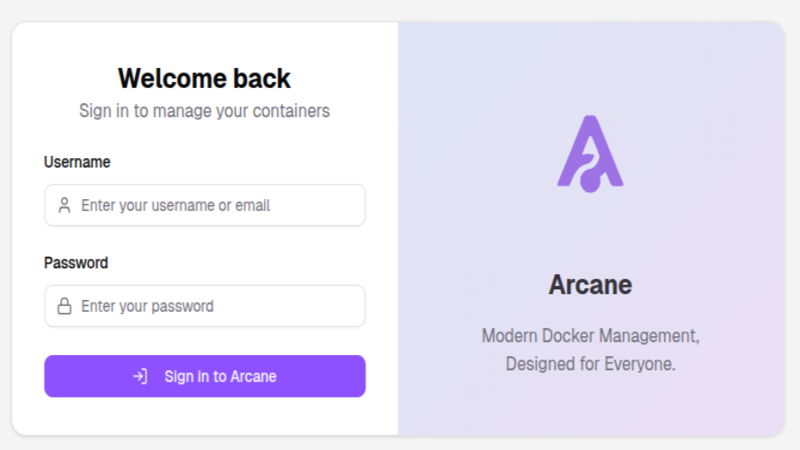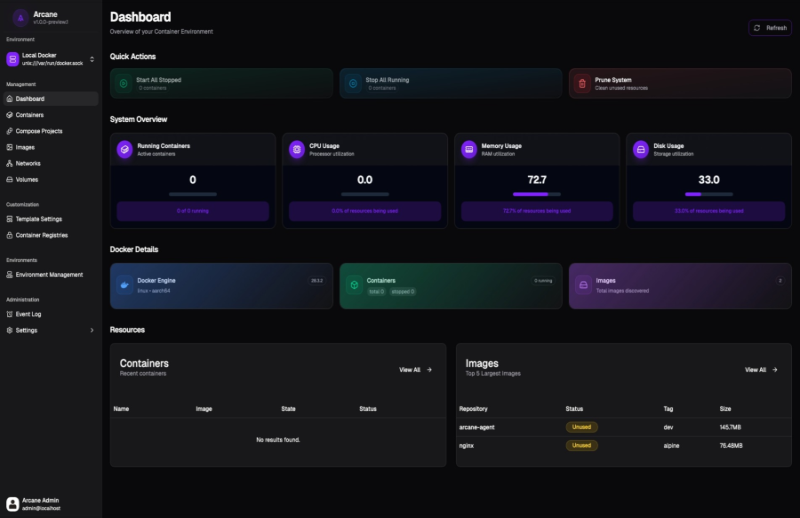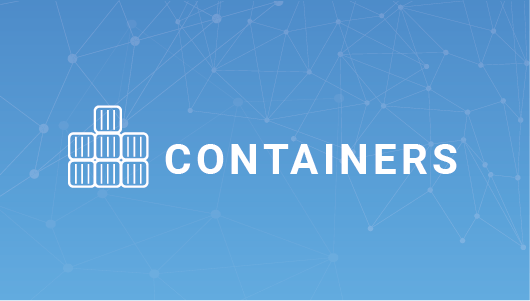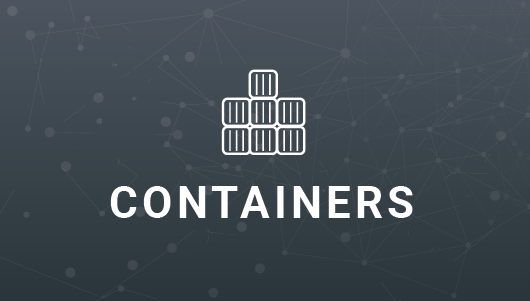Arcane is a modern interface to manage containers, images, volumes, and Docker networks, with a focus on simplicity and speed.
It is a lightweight alternative to Portainer and Dockge, while maintaining compatibility with the Docker/OCI ecosystem.
Goals
Install Docker on Ubuntu 24.04, deploy Arcane via Docker Compose, access the dashboard, and learn how to update, back up/restore, and troubleshoot common errors.
Prerequisites
Before you begin, you will need:
- An Ubuntu 24.04 LTS instance running in the cloud.
👉 You can create one in minutes at LetsCloud, in regions such as São Paulo, Fortaleza, or Miami, ensuring low latency for your users. - A user with
sudoprivileges. - Docker Engine and the Docker Compose plugin installed.
Installing Docker on Ubuntu 24.04
Before installing, remove old versions that may cause conflicts:
$sudo apt remove docker docker-engine docker.io containerd runc
Step 1 – Dependencies and key
$$$$$sudo apt update
sudo apt install -y ca-certificates curl gnupg
sudo install -m 0755 -d /etc/apt/keyrings
curl -fsSL https://download.docker.com/linux/ubuntu/gpg | sudo gpg --dearmor -o /etc/apt/keyrings/docker.gpg
echo "deb [arch=$(dpkg --print-architecture) signed-by=/etc/apt/keyrings/docker.gpg] https://download.docker.com/linux/ubuntu $(. /etc/os-release && echo "$VERSION_CODENAME") stable" | sudo tee /etc/apt/sources.list.d/docker.list > /dev/null
Step 2 – Install engine + compose plugin
$$sudo apt update
sudo apt install -y docker-ce docker-ce-cli containerd.io docker-buildx-plugin docker-compose-plugin
Step 3 – Run Docker without sudo (optional)
$$$sudo usermod -aG docker $USER
newgrp docker
docker version
Deploying Arcane with Docker Compose
Create a project folder:
$mkdir -p ~/arcane && cd ~/arcane
Generate secrets:
$$openssl rand -base64 32 # ENCRYPTION_KEY
openssl rand -base64 32 # JWT_SECRET
Create the compose.yml file:
$nano compose.yml
Reminder: Replace ENCRYPTION_KEY and JWT_SECRET
services:
arcane:
image: ghcr.io/ofkm/arcane:latest
container_name: arcane
ports:
- "3552:3552"
volumes:
- /var/run/docker.sock:/var/run/docker.sock
- arcane-data:/app/data
- ./projects:/app/data/projects
environment:
- APP_URL=http://localhost:3552
- PUID=1000
- PGID=1000
- ENCRYPTION_KEY=**PASTE_HERE**
- JWT_SECRET=**PASTE_HERE**
restart: unless-stopped
volumes:
arcane-data:
Start the service:
$docker compose up -d
Access: http://YOUR_IP:3552

First steps in the dashboard
- Username:
arcane
Password:arcane-admin - Manage containers, images, volumes, and networks visually.
- Use Projects to organize your
compose.ymlfiles. - Monitor logs and metrics in real time.

Updating Arcane
$$docker compose pull
docker compose up -d
Backup and Restore
Backup:
$docker run --rm -v arcane-data:/data -v "$PWD":/backup busybox sh -c 'cd /data && tar czf /backup/arcane-backup.tgz .'
Restore:
$docker run --rm -v arcane-data:/data -v "$PWD":/backup busybox sh -c 'cd /data && tar xzf /backup/arcane-backup.tgz'
Reverse Proxy with Nginx (HTTPS)
server {
listen 80;
server_name arcane.your-domain.com;
location / {
proxy_pass http://127.0.0.1:3552;
proxy_set_header Host $host;
proxy_set_header X-Forwarded-For $proxy_add_x_forwarded_for;
proxy_set_header X-Forwarded-Proto $scheme;
proxy_http_version 1.1;
proxy_set_header Upgrade $http_upgrade;
proxy_set_header Connection "upgrade";
}
}
Then, apply TLS with Let’s Encrypt.
Troubleshooting (common errors)
-
permission deniedin Docker- Check the
docker.sockbind. - Make sure the user is in the
dockergroup.
- Check the
-
Port already in use (3552)
- Change the mapping
3552:3552incompose.yml.
- Change the mapping
-
Not accessible over the internet
- Open the port in the firewall of your LetsCloud instance.
- Verify proxy configurations.
Arcane vs Portainer vs Dockge
- Arcane → Modern, fast UI, ideal for containers and small projects.
- Portainer → More complete, focused on enterprise environments.
- Dockge → Optimized for Docker Compose stacks.
Conclusion
In this guide, we installed and configured Arcane on an Ubuntu 24.04 instance — from Docker installation to deploying Arcane with Docker Compose, including backup, updating, troubleshooting, and setting up a reverse proxy with HTTPS.
Arcane stands out as a lightweight, modern, and practical UI for managing containers. It simplifies daily tasks such as running images, monitoring containers, and organizing projects, without requiring the full complexity of heavier tools like Portainer.
👉 To get started, we recommend:
- Creating a LetsCloud instance close to your users (São Paulo, Fortaleza, or Miami).
- Running your first container (e.g., Nginx or Redis) via Arcane.
- Testing project management with the
./projectsfolder. - Setting up a reverse proxy with HTTPS for production use.
This way, you’ll have an environment ready for fast development, testing labs, or even lightweight production workloads, always with Arcane’s simplicity.
Next steps: explore the official Arcane documentation and see how to integrate remote environments or automate image updates.










0 COMMENTS